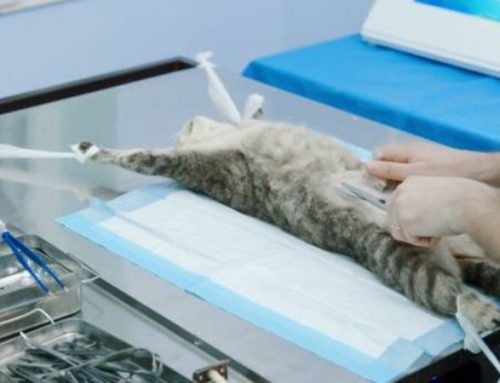Your dog’s eyes are more than just windows to their soul—they’re also vital indicators of their health. So when those bright, loving eyes turn red, it’s natural to feel a twinge of concern. Is it just a bit of dust, or something more serious? From mild irritations to urgent medical issues, red eyes in dogs can signal a wide range of conditions.
In this guide Nexus-Pets takes you through the common causes, warning signs, and when it’s time to call your vet—so you can protect your pup’s vision and peace of mind.
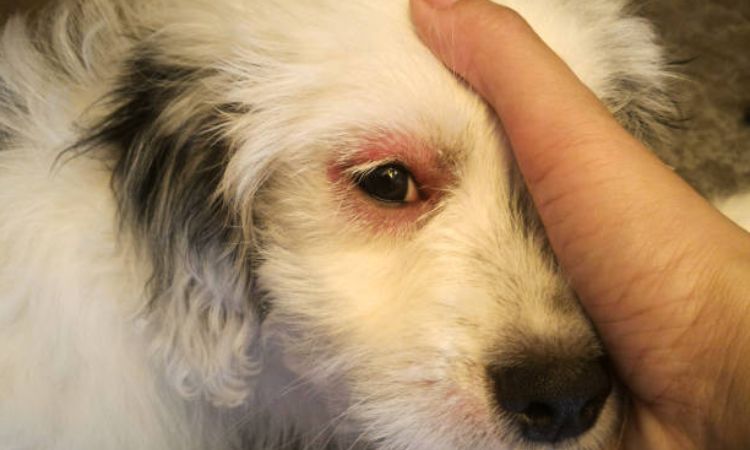
What Is Red Eye in Dogs?
Red eye in dogs refers to a noticeable redness or bloodshot appearance in one or both eyes. This condition isn’t a diagnosis itself, but rather a visible symptom indicating that something is irritating or affecting your dog’s eye health.
The redness typically results from inflammation, increased blood flow, or broken blood vessels, and it may appear suddenly or gradually over time. Depending on the cause, red eye can range from a mild, temporary irritation to a sign of a serious underlying condition that requires prompt veterinary attention.
Common Causes of Red Eye in Dogs
Red eye in dogs can result from a wide range of underlying issues, some mild and temporary, others requiring urgent veterinary care. Understanding these causes helps pet owners recognize when redness may signal something serious. Here are the most common culprits behind canine red eyes:
1. Allergies (Seasonal or Environmental)
Pollen, dust mites, mold, smoke, or chemicals can trigger allergic reactions in dogs, leading to red, itchy, and watery eyes. Allergies are often accompanied by sneezing, skin irritation, or paw-licking.
2. Conjunctivitis (“Pink Eye”)
Inflammation of the conjunctiva, caused by:
- Bacteria
- Viruses
- Allergens
This condition causes redness, swelling, discharge (clear, yellow, or green), and squinting. It’s one of the most common eye problems in dogs and can be highly contagious if infectious.
3. Dry Eye (Keratoconjunctivitis Sicca – KCS)
Dry eye occurs when tear production is insufficient, leading to irritation, inflammation, and secondary infections. Common in certain breeds (e.g., Bulldogs, Shih Tzus), KCS often causes thick eye discharge and a dull-looking cornea.
4. Glaucoma
This is a serious and painful condition caused by increased intraocular pressure. It leads to red eye, cloudiness, enlarged pupils, vision loss, and bulging of the eye if untreated. Glaucoma is a medical emergency in dogs.
5. Uveitis
An inflammation of the uveal tract (iris, ciliary body, and choroid), uveitis may result from trauma, infections, immune disorders, or cancer. Signs include redness, squinting, excessive tearing, and a small or irregular pupil.
6. Eye Injuries or Trauma
Blunt trauma, scratches, or bites can cause redness, bleeding, swelling, or even rupture of the eye structures. Any injury involving the eye should be assessed by a vet immediately.
7. Environmental Irritants
Exposure to smoke, dust, perfumes, household cleaners, or shampoo can irritate the sensitive structures of a dog’s eye, resulting in redness and discomfort.
8. Foreign Object in the Eye
Grass seeds, dust particles, or debris can get trapped under the eyelid or on the cornea, causing acute redness, blinking, and pawing at the eye. If not removed quickly, it can lead to infection or ulcers.
9. Eye Infections
Caused by:
- Bacteria
- Viruses
- Fungi
Infections may result in redness, discharge, swelling, and discomfort. Left untreated, infections can spread and cause long-term damage.
10. Eyelid Disorders
Conditions like:
- Entropion (inward-rolling eyelids)
- Ectropion (outward-rolling eyelids)
These structural abnormalities cause irritation from constant rubbing or exposure, leading to redness, discharge, and secondary infections.
11. Tumors or Growths in or Behind the Eye
Masses within or around the orbit can press on ocular structures, disrupt normal function, and cause redness, swelling, or protrusion of the eye (exophthalmos). Some may be benign; others malignant.
12. High Blood Pressure (Hypertension)
In older dogs or those with kidney or heart disease, high blood pressure can cause bleeding into the eye (hyphema) or retinal damage, leading to redness, visual changes, or even blindness.
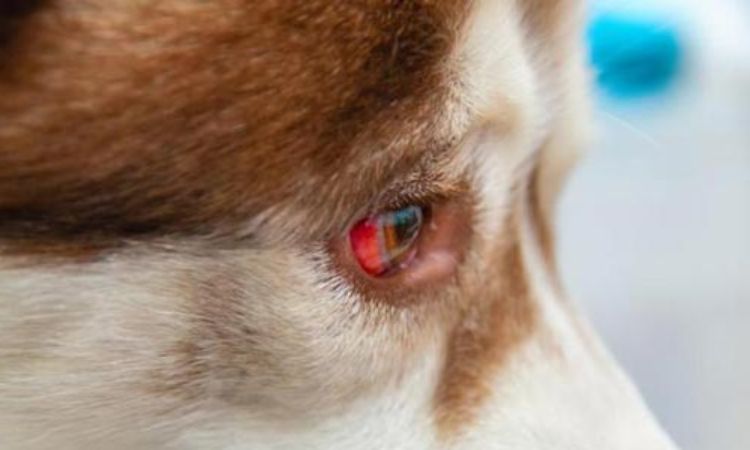
Symptoms Associated with Red Eye in Dogs
Red eye in dogs can present with a variety of symptoms that often help indicate the severity and possible cause of the condition. Common signs to watch for include:
- Visible Redness or Bloodshot Appearance: The affected eye may show obvious redness, either as a diffuse bloodshot look or localized patches of redness, depending on the underlying issue.
- Eye Discharge: Dogs may have watery tears or thick, sticky discharge that can range in color from clear to yellow, green, or even blood-tinged, signaling irritation, infection, or injury.
- Squinting and Excessive Blinking: A dog with red eyes may squint frequently or blink more than usual as a response to discomfort or pain in the eye.
- Pawing or Rubbing at the Eye: Repeated pawing or rubbing at the eye or face often indicates irritation, itching, or pain and can sometimes worsen the condition if left unchecked.
- Swelling Around the Eye: Inflammation may cause noticeable swelling of the eyelids or surrounding tissues, which can accompany redness and discomfort.
- Cloudiness or Change in Eye Color: The eye’s surface may appear cloudy or hazy, or the iris may show color changes, which can be signs of corneal damage, uveitis, or glaucoma.
- Vision Changes: Dogs with red eyes might bump into objects, become disoriented, or otherwise display signs of impaired vision if the condition affects their eyesight.
Beyond visible eye symptoms, dogs may show behavioral changes such as reluctance to open their eyes fully, sensitivity to light, or general signs of distress related to eye pain.
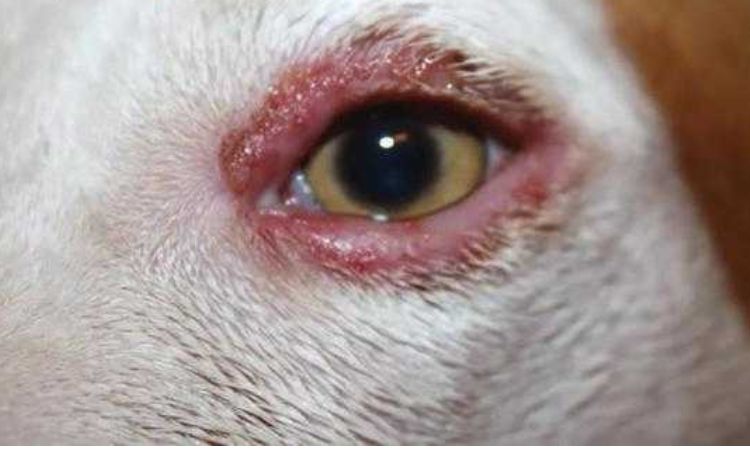
When Is Red Eye an Emergency?
Redness in a dog’s eye is not always urgent, but certain signs indicate that immediate veterinary attention is necessary to prevent serious complications, including permanent vision loss. You should seek emergency care if you notice any of the following:
- Severe swelling or sudden onset of redness: Rapidly developing swelling around the eye or sudden intense redness can signal serious inflammation or trauma.
- Cloudiness of the eye or changes in the pupil: A cloudy cornea or irregular pupil shape can indicate conditions such as glaucoma or uveitis that require urgent treatment.
- Excessive discharge that is colored or bloody: Thick, greenish, yellow, or bloody eye discharge often points to infection or internal eye bleeding.
- Obvious signs of pain: Persistent squinting, constant pawing or rubbing at the eye, or reluctance to open the eye suggest discomfort needing prompt care.
- Noticeable changes in vision or signs of blindness: If your dog bumps into objects, seems disoriented, or shows other signs of impaired vision, immediate evaluation is essential.
- Eye unable to open, bulging, or active bleeding: A swollen, protruding eyeball (proptosis) or visible bleeding from the eye area is a medical emergency.
- Redness that does not improve or worsens after a few hours: Persistent or worsening redness despite basic care indicates a deeper problem.
Pro Tip: When in doubt, always contact your veterinarian immediately. Some eye conditions can deteriorate rapidly and cause irreversible damage if not treated quickly.

Diagnosis: How Vets Assess Red Eye in Dogs
When a dog presents with red eyes, veterinarians begin with a comprehensive physical examination, focusing closely on the eyes. This initial step helps identify visible signs of inflammation, injury, swelling, discharge, or abnormalities in the eyelids and surrounding tissues.
To further pinpoint the underlying cause, vets employ specialized diagnostic tests tailored to assess specific eye functions and conditions:
- Schirmer Tear Test: This test measures tear production to determine if the dog suffers from dry eye (keratoconjunctivitis sicca). Insufficient tear production compromises the eye’s protective surface and often contributes to redness and discomfort.
- Fluorescein Stain: By applying a fluorescent dye to the eye’s surface, this test reveals corneal ulcers, scratches, or abrasions that might not be visible during a routine exam. A positive stain indicates damage to the corneal epithelium, a common cause of red eyes.
- Tonometry: This test measures intraocular pressure to diagnose conditions like glaucoma or uveitis. Elevated or decreased pressure within the eye can directly cause redness and pain, and timely diagnosis is critical to prevent vision loss.
If initial tests do not clarify the cause or if the condition appears severe, vets may recommend more advanced diagnostics, such as:
- Ocular Ultrasound: Useful to visualize internal eye structures and detect tumors, hemorrhages, or structural abnormalities that are not visible externally.
- Blood Pressure Measurement: Systemic hypertension can cause rupture of eye blood vessels leading to redness, so assessing blood pressure can help identify underlying systemic causes.
- Advanced Imaging (CT or MRI): These techniques provide detailed views of the eye and surrounding tissues, assisting in diagnosing complex conditions such as tumors or deep infections.
Through this stepwise approach—combining physical examination with targeted testing—veterinarians can accurately identify the root cause of red eye in dogs and develop an effective treatment plan to protect the dog’s vision and comfort.
What You Can Do at Home (Before the Vet)
If you notice your dog’s eyes are red or irritated, there are several important steps you can take at home to help minimize discomfort and prevent further damage before seeing a veterinarian.
First, try to prevent your dog from rubbing, scratching, or pawing at the affected eye, as this can worsen inflammation or cause injury. Using an Elizabethan collar (e-collar) can be very effective in stopping your dog from touching the eye.
If there is any discharge around the eye, gently wipe it away using a clean, damp cloth or cotton ball. Be very careful to avoid touching the eyeball itself, as this may cause pain or injury.
It’s also important to keep your dog away from common household irritants such as smoke, cleaning sprays, strong perfumes, or dust, which can aggravate eye redness and inflammation.
Lastly, do not apply any human eye drops, ointments, or medications to your dog’s eyes unless specifically prescribed by a veterinarian, as some substances can be harmful or worsen the condition.
Taking these precautions at home can help keep your dog comfortable and reduce the risk of further eye damage while you arrange for veterinary evaluation and treatment.
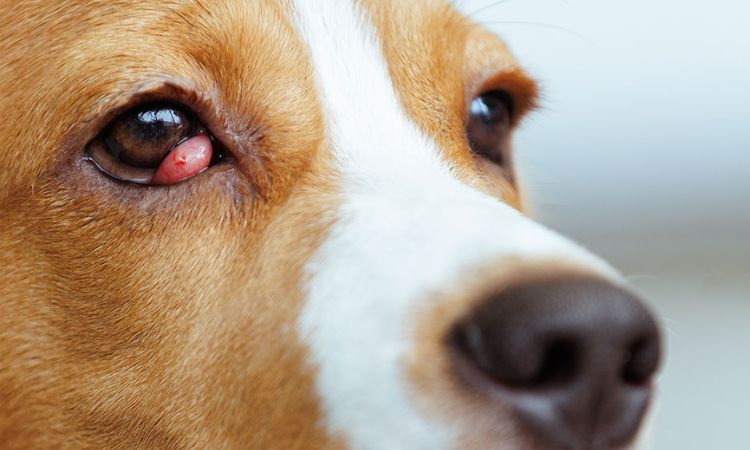
Preventing Red Eye Issues
- Have your dog’s eyes checked regularly by the vet to catch any problems early.
- After walks or outdoor play, quickly remove any dirt, grass, or debris from your dog’s eyes to avoid irritation.
- Follow your vet’s advice to manage your dog’s allergies, which can help prevent red, itchy eyes.
Taking these simple steps can keep your dog’s eyes healthy and reduce the chance of red eye problems.
Seeing your dog with a red eye is always a cause for concern. This condition can signal anything from mild irritation to serious issues like glaucoma. The key is to recognize symptoms early, understand potential causes, and know when to seek immediate veterinary attention. Don’t hesitate to contact your vet if you notice any redness or discomfort in your dog’s eyes – timely diagnosis and treatment can make a significant difference.






